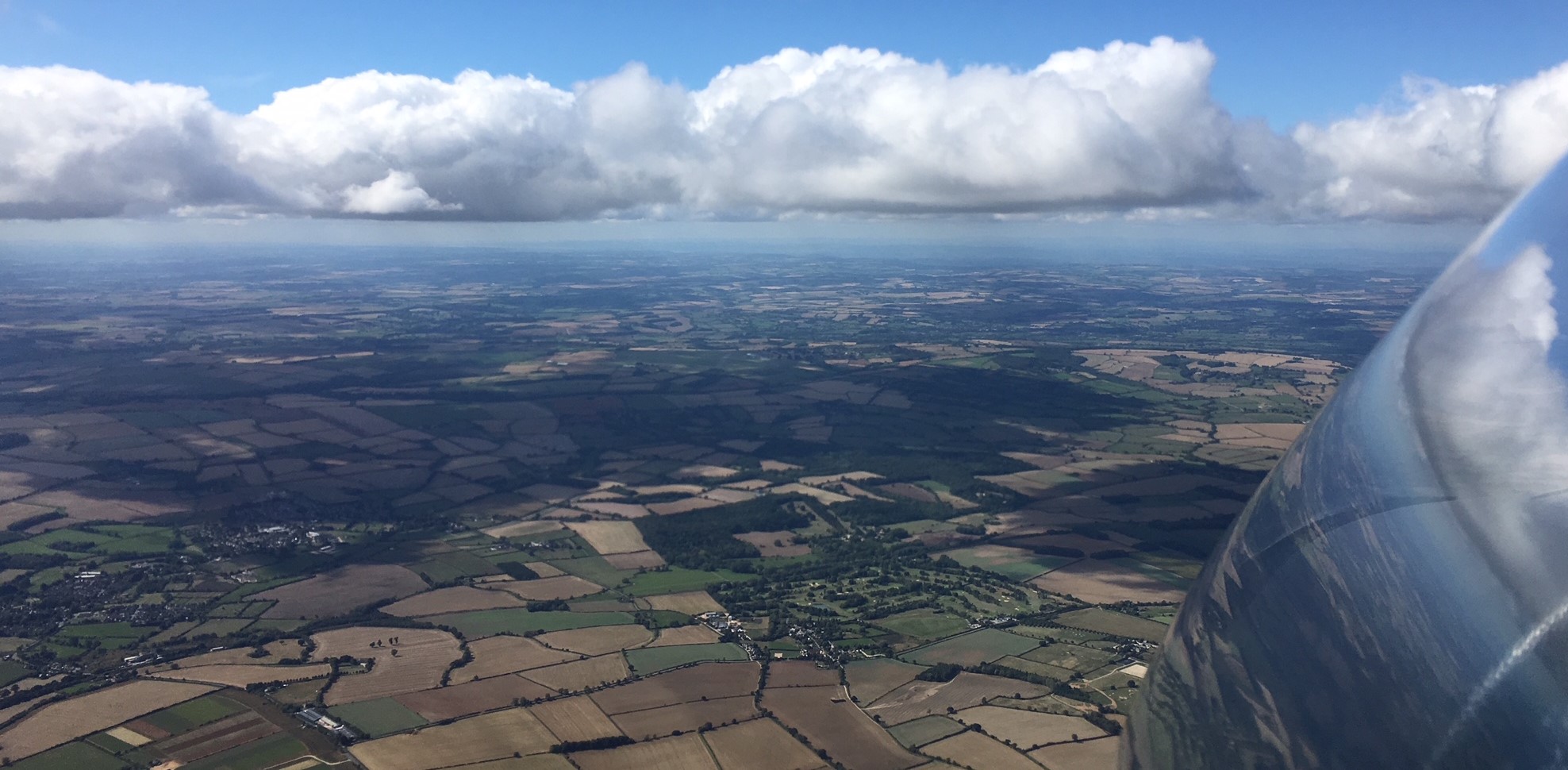Bronze and Cross Country Endorsements
Going solo is a great achievement. This page describes the two further steps during which a solo pilot develops the skills and gains the experience needed to become a qualified glider pilot; those two steps are qualifying for the Bronze and Cross Country endorsements.
Gaining experience and improving skills and knowledge are the most important features of this part of a glider pilots training. And as everyone learns at their own rate, it is important not to rush any aspect of pilot training or to feel peer-pressured to achieve the next level.
Please note that club CFI’s can provide detailed advice and guidance on all aspects of training and testing.
Bronze Endorsement
Qualifying Requirements
The qualifying requirements for the Bronze endorsement are described in the publication ‘BGA Gliding Certificate and Endorsements’.
Theoretical Knowledge
The Bronze endorsement theoretical knowledge test covers a broad range of subjects. For details, please refer to the BGA Bronze Theoretical Knowledge Syllabus and Examination webpage
Club CFIs can arrange the theoretical knowledge test.
Practical Flying Skill
Having completed the gliding syllabus (other than navigation and field landings), the applicant must demonstrate an adequate level of safe piloting skills and airmanship such that ‘the successful outcome of a procedure or a manoeuvre should never seriously be in doubt’.
The practical flying skill test is carried out by a Full Rated instructor, as arranged with the club CFI. The test is detailed in the BGA Examining Standards document on page 18.
Cross Country Endorsement
Qualifying Requirements
The qualifying requirements for the Cross Country endorsement are described in the publication ‘BGA Gliding Certificate and Endorsements’ In summary, to qualify the applicant has to demonstrate his or her ability to soar, to navigate effectively, and to select and fly an approach into a suitable field.
Theoretical knowledge
Navigation and field landing basics are covered in the Bronze Theoretical Knowledge test. Detailed briefings are provided alongside the practical training below.
Navigation briefings are available here (with thanks to Paul Ruskin)
Field landing briefings are available here (with thanks to Paul Ruskin)
Further guidance on field landings is available here.
Practical Flying Skill
As well as completing the gliding navigation and field landing flying exercises in the gliding syllabus, the applicant must demonstrate their ability to:
– soar for at least one hour (supervised solo), and
– navigate safely and effectively (assessed by an instructor), and
– select and safely fly a circuit to a suitable field (assessed by an instructor)
The practical flying skill tests are carried out by a Full Rated instructor (usually in a motor glider), as arranged with the club CFI. The tests are detailed in the BGA Examining Standards document on page 23.
Note
Once qualified with the Cross-Country Endorsement, a pilot can apply for a Sailplane Pilot Licence (SPL) via the approved conversion process. Read more on the ‘Sailplane Pilot Licence Conversion’ webpage here.
Forms & Publications
Application forms are available here.
Guidance for instructor and examiners who are assessing Bronze and Cross Country Endorsements is available in the BGA Examiner Standards document.
Now apply for your Sailplane Pilot Licence!
Once you have qualified for the Bronze and Cross Country Endorsements, you can apply for a Sailplane Pilot Licence (SPL). There’s information on how to apply for an SPL here.
